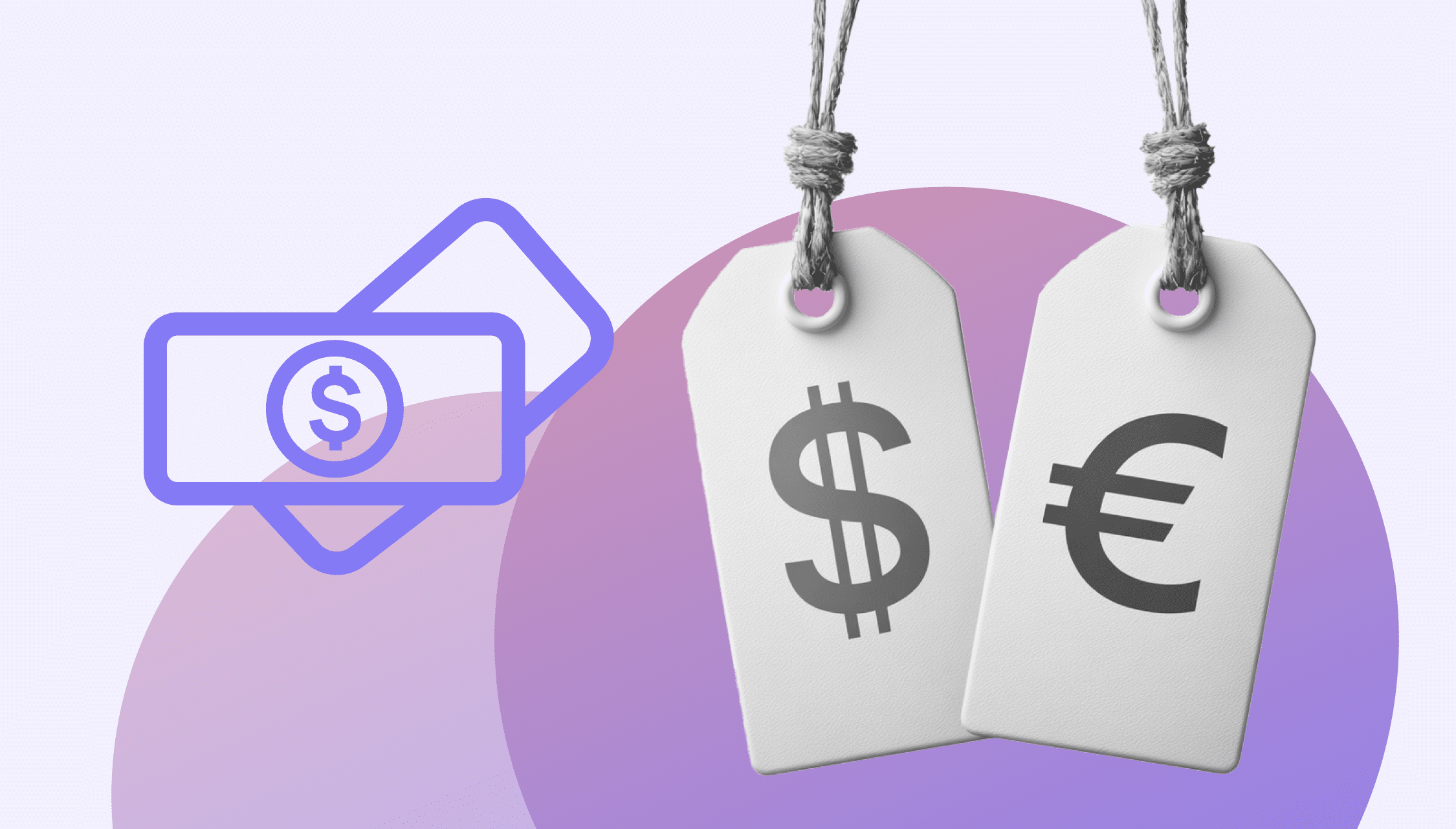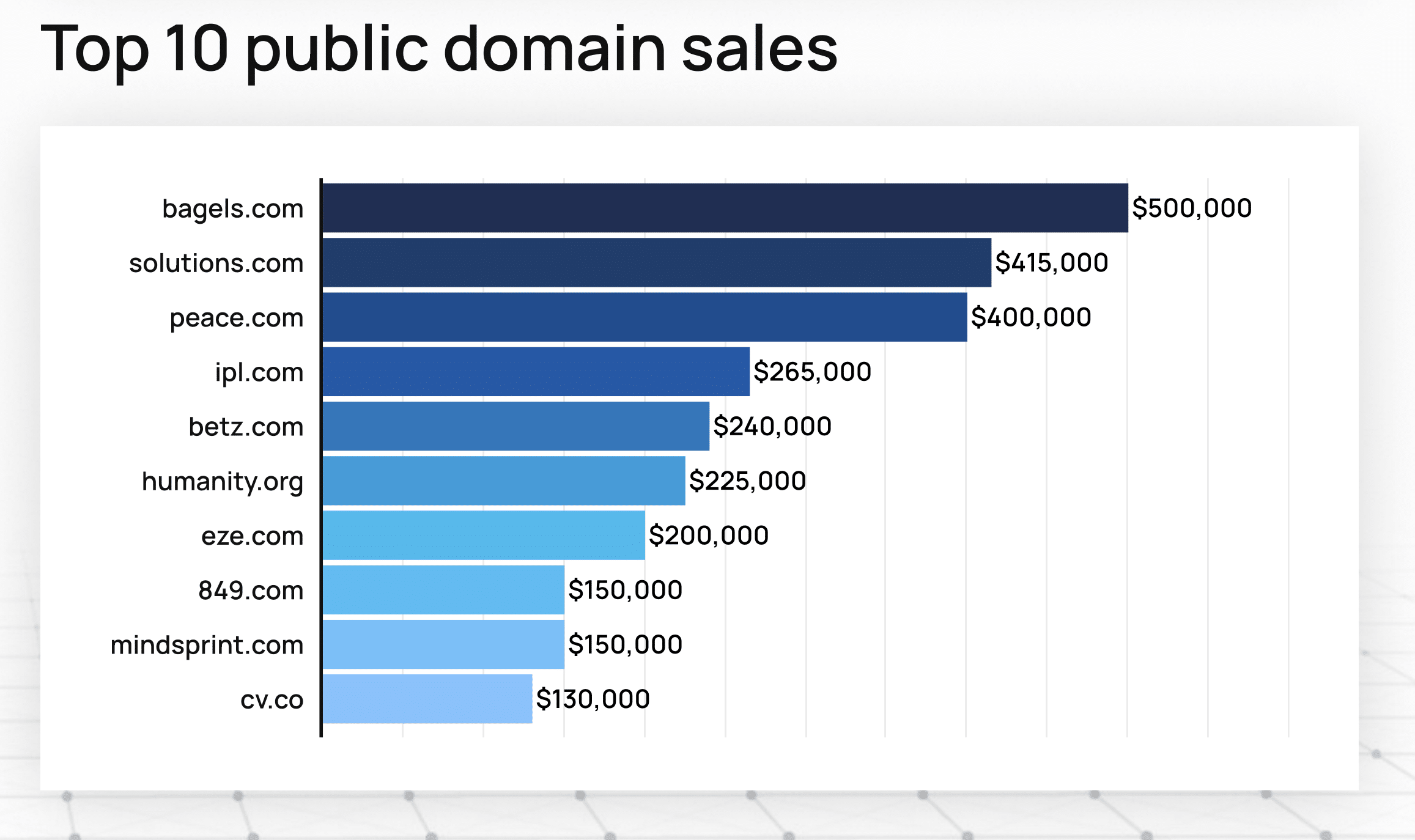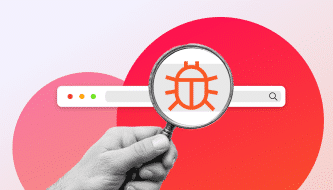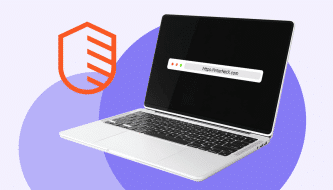
What is the domain aftermarket?

How the growing demand for online presence is driving the domain aftermarket as a key investment arena.
Published by

Simone Catania
Date
The rapid expansion of the internet and the ongoing wave of digitalization have transformed the way businesses and individuals operate online. In this evolving landscape, domain names have emerged as much more than simple website addresses—they are now regarded as valuable digital assets.
Much like real estate in the physical world, domains hold intrinsic value, with premium names often commanding high prices. This has given rise to the domain aftermarket, a thriving ecosystem where digital assets are bought, sold, and traded. As demand for online presence intensifies, the domain aftermarket continues to grow as a crucial part of the digital economy.
What is the domain aftermarket and why does it matter?
The internet runs on domain names. Yet most of the short, memorable, and brandable ones were registered years ago. That’s where the domain aftermarket comes in—a thriving secondary marketplace where already registered domains are bought and sold.
Unlike the primary market, where registrars sell available domains at standard prices, the aftermarket gives existing owners the chance to resell valuable domains, often at premium prices. For startups searching for the perfect brand name, enterprises protecting trademarks, or investors looking for digital assets, this marketplace opens doors to opportunities that would otherwise stay closed.
In many ways, the domain aftermarket bridges the gap between supply and demand, ensuring that high-value domains don’t remain idle.
Primary vs. secondary markets
At its core, the domain aftermarket is where domain owners sell domains they no longer need—or bought specifically for resale—to interested buyers.
- Primary market: Domains are registered for the first time through a registrar (e.g., InterNetX) at standard pricing.
- Secondary market: Already owned domains get listed for resale—often because they carry brandable names, SEO value, or existing traffic.
In other words, if a domain is taken but you want it, the secondary marketplace is where you’ll likely find it.
Common channels include direct negotiations, Buy-It-Now listings, domain auctions, and brokerage services integrated into domain platforms like AutoDNS.
What drives domain value in the aftermarket?
Why do some domains sell for just a few hundred dollars while others reach six figures? Several factors drive pricing in the domain aftermarket:
- Scarcity: Short, one-word domains are in limited supply.
- Memorability: Catchy, easy-to-spell names stick in people’s minds.
- Intent match: Names matching search or commercial intent often attract higher bids.
- Brandability: Unique, marketable names carry long-term strategic value.
- Traffic & authority: Domains with backlinks or type-in traffic provide SEO advantages.
- Liquidity: Easily transferable domains tend to sell faster and at higher prices.
What options do you have when purchasing a domain?
The domain aftermarket offers multiple ways to acquire domains, with the best option often depending on your budget, timing, and whether you prefer speed, privacy, or expert assistance:
- Direct negotiation – Buyer contacts the owner directly via WHOIS or a landing page.
- Marketplace Buy-it-now (BIN) – Fixed-price listings on platforms like Sedo offer instant purchases.
- Auctions – Competitive bidding for high-demand or expired domains, often with strict timelines.
- Brokerage – Professional negotiators handle complex or high-value sales on behalf of buyers or sellers.
Key terms from the domain aftermarket
To navigate the domain aftermarket confidently, it helps to understand the key terms and concepts that define this fast-moving marketplace
Premium domain – High-value domain, often short or brandable.
BIN (Buy-It-Now) – Fixed price, instant purchase option.
Make offer – Buyer proposes a price; seller negotiates.
Fast transfer – Instant ownership change via integrated registrars.
Drop catching – Capturing domains the moment they expire.
Expired auction – Selling domains after non-renewal.
Lease-to-own – Pay over time before full ownership transfers.
Escrow – Third-party holds funds until both parties fulfill conditions.
Appraisal – Estimating a domain’s market value.
Portfolio landing pages – Showcase multiple domains for sale.
What services does the aftermarket include?
The domain aftermarket is much more than simple buying and selling. It’s a full ecosystem of platforms, tools, and services designed to streamline discovery, valuation, negotiation, and transfer.
Here are the main categories:
1 Marketplaces & listing networks
Secondary marketplaces such as Sedo have become the backbone of the domain aftermarket, connecting sellers with a global pool of buyers. Instead of handling negotiations manually, buyers can search vast inventories using filters for keywords, TLDs, and price ranges to find domains that fit their branding or SEO goals. Sellers benefit from wide exposure through listing syndication, flexible pricing models like Buy-It-Now or auctions, and professional landing pages that showcase domains and boost conversions.
AutoDNS integrates SedoMLS ensuring instant transfer once payment clears—reducing friction for buyers and accelerating the entire sales process.
2 Brokerage & negotiation services
For high-value or sensitive domain sales, professional brokers handle negotiations on behalf of buyers or sellers. On the buy side, they help clients find and secure premium names that match branding or investment goals, often using industry connections to approach owners directly. On the sell side, brokers market domains, reach out to qualified buyers, and manage the entire negotiation process. Their fees typically range from 10 to 20 percent of the sale price, with rates depending on exclusivity agreements and deal complexity.
3 Auctions, expired domains & backorders
Many buyers want to know how to buy expired domains quickly and securely. When a domain owner fails to renew their domain, the name typically goes through several stages before becoming available to the public:
- Grace period: The original owner still has the option to renew the domain without losing ownership.
- Auction phase: If the owner doesn’t renew, the domain often moves to public auctions where interested buyers can start bidding.
- Closeout or drop: Unsold domains either become available for backorders or open registration, often snapped up the moment they drop.
There are platforms specializing in this process, offering tools for bidding and backordering. Drop catching services go one step further by using automated systems to register domains the instant they become available. Because competition for high-value expired domains can be intense, many buyers rely on backorder credits, automated bidding, and portfolio research tools to boost their success rate. Expired domains can carry SEO risks like spammy backlink profiles—always check history before buying.
4 Escrow & payment processing
Most secondary marketplaces use escrow services to secure domain transactions. These services verify buyer and seller identities through KYC/AML checks, release funds only after the domain transfer is complete, and provide chargeback protection to minimize fraud risk in high-value deals.

5 Valuation & appraisal tools
Estimating a domain’s worth typically combines automated appraisals with human expertise. Automated tools analyze factors like traffic, keyword data, and past sales to deliver quick estimates, while brokers or consultants bring market knowledge and brandability insights into the process. Key pricing drivers include the domain’s TLD, length, search volume, and comparable sales data, all of which help determine a realistic market value.
6 Financing & lease-to-own
Not every buyer can or wants to pay the full price upfront, so many sellers now offer financing options. These typically include installment plans spread over six to twelve months, with the domain transferring to the buyer only after the final payment clears. If the buyer defaults, the seller retains ownership, ensuring financial protection throughout the process.
7 Parking & monetization
While waiting for a buyer, many domain owners monetize their assets with domain parking and other monetization strategies by displaying type-in traffic ads, using pay-per-click (PPC) landing pages, or adding for-sale notices with contact forms. These strategies help offset renewal costs and keep portfolios cash-flow positive until a sale occurs.
8Portfolio management & operations
Successful domain investors treat their portfolios like financial assets—tracking performance metrics, testing pricing strategies, and using analytics to guide every decision in the aftermarket. They often use professional domain management tools for:
- Tracking offers and negotiations
- Testing pricing strategies
- Managing DNS and sales landers
- Analyzing portfolio performance
9 Brand protection & legal safeguards
Legal safeguards play a key role in the domain aftermarket. Buyers and sellers often start with trademark screening to avoid accidental infringement. For disputes, policies like UDRP and URS provide clear resolution frameworks. Many also rely on brokers or escrow services to ensure safe, anonymous negotiations, especially in high-value or sensitive transactions.
| Category | Description | Examples / Notes |
| Primary market vs. aftermarket | Primary = first registration of a domain. Aftermarket = resale of already registered domains. | Primary = registrars (InterNetX). Aftermarket = Sedo. |
| Types of sales | Fixed-price, Make-offer, auction, brokerage. | BIN (Buy-It-Now), negotiation-based, expired domain auctions, brokered sales. |
| Key players | Marketplaces, registrars, brokers, investors. | Sedo, AutoDNS |
| Domain valuation | Price influenced by keywords, length, TLD, traffic, branding potential. | One-word .com = high value; long/complex names = lower value. |
| Transaction models | Direct sale, Escrow service, lease-to-own, payment plans. | – |
| Expired Domains | Domains not renewed are auctioned/dropped and re-registered. | – |
| Premium domains | High-value names set aside by registries or resold for significant amounts. | Voice.com sold for $30M; registry-reserved premium new gTLDs. |
| Legal/Policy Aspects | UDRP, ICANN policies, local trademark law. | Disputes over cybersquatting handled via WIPO. |
| Trends | Growth of new gTLD aftermarket, increasing demand for brandable names, AI/tech-related keywords. | .ai domains booming, ccTLDs gaining traction locally. |
Who are the key players in the domain aftermarket?
The domain aftermarket attracts a wide range of buyers and sellers, each with distinct goals, budgets, and strategies. Understanding these personas helps clarify why certain names command premium prices while others sell for far less.
The buyer personas are:
- Startups & SMBs usually look for short, memorable domains or geo-specific names. With budgets from a few hundred to several thousand dollars, they prioritize branding potential, affordability, and quick transactions.
- Enterprises & brand owners often buy premium one-word domains or acquire names defensively to protect trademarks. They’re willing to pay five or six figures for strategic assets and typically use brokers to ensure privacy and legal security.
- Marketers & SEO managers focus on keyword-rich domains that can boost rankings and click-through rates. Aged domains with solid backlink profiles are especially valuable for accelerating SEO results. SEO buyers often analyze historical traffic and backlink data before making offers on expired or auctioned domains.
The seller personas are:
- Domain investors (domainers) often manage portfolios with hundreds or even thousands of domains, ranging from brandable names to generic and geo-specific assets. They rely on data-driven analysis, like sell-through rates, to refine pricing strategies and maximize returns.
- End-user divestitures involve companies selling off unused domains after mergers, acquisitions, or rebranding. Their main goal is usually quick liquidity rather than long-term portfolio growth.
When it comes to the decision factors for both sides, buyers and sellers in the domain aftermarket weigh several factors before closing a deal. Price typically depends on comparable sales, the domain’s length, and its TLD, while legal risk is assessed through trademark searches and dispute policies. Time-to-transfer also plays a role, as faster transactions help finalize deals quickly. Although .com remains the most sought-after extension, interest in ccTLDs and new gTLDs continues to grow.
Smart investors balance risk, budget, and timing to maximize returns in the domain aftermarket.
Market insights: Domain aftermarket in 2025
The Global Domain Report 2025 snapshots the status quo of the domain market and reveals important trends shaping the secondary marketplace.
Overall market performance
In 2024, the domain aftermarket experienced steady growth without major fluctuations in pricing or sales volume. Sedo reported a slight increase in total transactions compared to 2023, with the average sale price reaching $2,345 and the median price at $549, reflecting a stable yet active market environment.
The most popular TLDs at Sedo
.com: Dominates with 59% of all sales; median prices continue rising.
.de: Represents 13% of Sedo transactions, mainly keyword-driven names.
.net & .org: Around 4% each, used primarily by NGOs and tech communities.
ccTLDs: Growing demand for .ai, .fr, .es; often tied to local-language keywords.
new gTLDs: Over 200 extensions (.xyz, .shop, .online) saw aftermarket activity in 2024, though at lower price points.
Recent data shows that one-word brandable domains continue to command premium prices, while exact-match keyword domains maintain steady demand for SEO-focused acquisitions. At the same time, fast-transfer listings have improved market liquidity by enabling quicker, more seamless transactions through registrar integrations.
Why AutoDNS × Sedo is the all-in-one aftermarket solution
Managing domain sales, purchases, and monetization once required juggling multiple platforms. AutoDNS × Sedo changes that by bringing the entire process into one integrated workspace. Buyers can search Sedo-listed inventory directly in the AutoDNS Domain Studio, list domains with Buy-It-Now pricing for instant global exposure, and even connect with Sedo’s expert brokers to negotiate premium acquisitions—all without leaving the platform. Inactive domains can be monetized with simple nameserver switches, while built-in safeguards like two-factor authentication, account linking, and access controls ensure every transaction remains secure and seamless from start to finish.
Find perfect domains
Your next steps in the domain aftermarket
The domain aftermarket opens opportunities for startups searching for brandable names, enterprises securing trademarks, and investors building digital portfolios. With secondary marketplaces, auctions, and professional brokerage services, buying and selling premium domains has never been easier—or faster.
With AutoDNS × Sedo, the entire process—from discovery and negotiation to transfer and monetization—happens in one secure, integrated platform. For a practical overview of how it all works, see the Sedo domain trade via AutoDNS guide for a step-by-step explanation.







